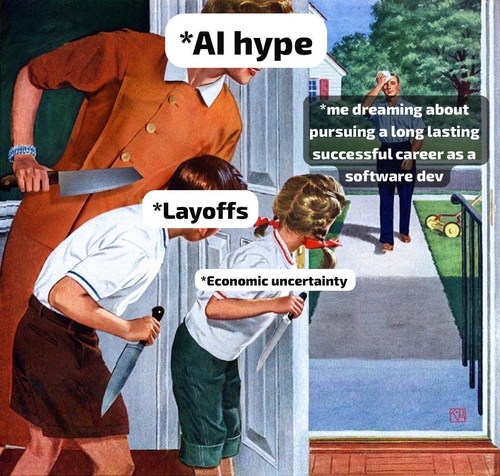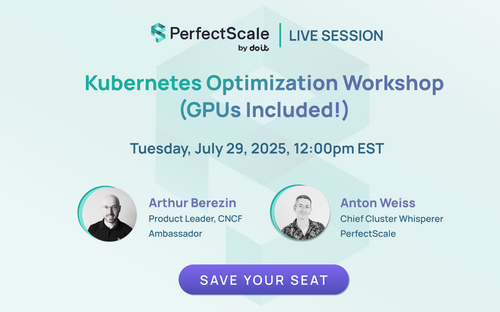FAUN.dev's Programming Weekly Newsletter
🔗 View in your browser | ✍️ Publish on FAUN.dev | 🦄 Become a sponsor
🔗 View in your browser | ✍️ Publish on FAUN.dev | 🦄 Become a sponsor
VarBear
#SoftwareEngineering #Programming #DevTools
📝 The Opening Call
AI is proving to be more than a mere buzzword, as it orchestrates interviews and revolutionizes Android's giants. Meanwhile, digital screens continue their quiet dominance, and an adblock bypass reveals the persistent quirks of legacy code. Get ready to unravel mysteries in server-driven UI, wonder at organic simulations, and celebrate Django's relentless evolution.
🎤 9 Best AI Interview Assistant Tools For Job Seekers in 2025
🧬 Algorithms for making interesting organic simulations
📱 Android is about to take another AI leap over Apple
🏠 Bringing Gemini intelligence to Google Home APIs
💽 Distributed Systems 101
🎭 Exploring CHAOS: Building a Backend for Server-Driven UI
🛡️ How I found a bypass in Google's big anti-adblock update
🎉 Happy 20th birthday Django!
💡 How does a screen work?
🔌 Zig's New Async I/O
Read. Think. Code. Uncover the stories machines can't tell.
Have a great week!
FAUN Team
🎤 9 Best AI Interview Assistant Tools For Job Seekers in 2025
🧬 Algorithms for making interesting organic simulations
📱 Android is about to take another AI leap over Apple
🏠 Bringing Gemini intelligence to Google Home APIs
💽 Distributed Systems 101
🎭 Exploring CHAOS: Building a Backend for Server-Driven UI
🛡️ How I found a bypass in Google's big anti-adblock update
🎉 Happy 20th birthday Django!
💡 How does a screen work?
🔌 Zig's New Async I/O
Read. Think. Code. Uncover the stories machines can't tell.
Have a great week!
FAUN Team
⭐ Patrons
info.perfectscale.io
Running Kubernetes efficiently is already complex. Add LLM workloads, and suddenly you're dealing with expensive GPU nodes that can't afford to sit idle.
Join Arthur Berezin (VP Product at PerfectScale by DoiT) and Anton Weiss (Chief Cluster Whisperer) as they share a clear, proven approach to optimizing Kubernetes costs without compromising reliability.
You'll learn:
→ How to manage CPU, memory, and GPU resources per workload.
→ How to align these with autoscaling for maximum efficiency.
✅ Clear code examples. ✅ Real use cases. ✅ No fluff.
Only 50 seats available. Register now !
ℹ️ News, Updates & Announcements
pharo.org
Pharo chucks constructors, types, and interfaces overboard. Its syntax—effortlessly elegant like a well-crafted haiku. Pharo 13.0 rolls in, riding the wave of 698 shiny new pull requests.
developers.googleblog.com
Gemini-charged Home APIs electrify smart homes, tapping into a staggering 750 million devices. Apps? They now whisper intelligent automations. Dive in and transform your smart home into a mind reader with AI’s sleight of hand, all perfectly meshed with Google platforms.
androidauthority.com
Arm's SME2 promises sixfold AI speed boost in the next wave of Android phones. Could give Apple a run for its money by 2026 in mobile AI. Watch for Lumex branding.
kristoff.it
Zig's New I/O Interface lets users plug in their own I/O designs, cranking up parallelism and taming the chaos of async function spread. Code bloat? Vanquished, thanks to clever virtual tables. And those compiling optimizations? They shave down runtime expense like a barber on a mission.
🔗 Stories, Tutorials & Articles
makingsoftware.com
Tiny electric crystals have dethroned the clunky electron guns, quietly transforming digital displays into computing's under-the-radar MVPs. From firing electrons at glowing phosphors to bending light through crystal layers, screens are the overlooked magic powering everything we see. Understanding them isn’t just fun — it unlocks how digital color, rasterization, and GPUs truly work.
leodalcegio.dev
Distributed systems rely on protocols, IP addresses, and DNS to enable communication between services and address scalability challenges like resiliency and load balancing. The use of event-driven architecture, horizontal scaling, and data consistency through replicas are key strategies in ensuring efficient and reliable performance across distributed systems.
favtutor.com
98% of hiring gurus can't stop gushing about AI's turbo-charging power for candidate prep. Final Round AI is sneakily effective in stealth mode, and Interviews.chat gets props for its chameleon-like skills. AI's not just for techies anymore; it's morphing into every interviewee's secret weapon.
jyn.dev
Tools often bloat as users cling to them, terrified of steep costs. Ripgrep and the classic GNU grep syntax point the way to easier transitions—if we bothered to notice. Simpler shell workflows beckon us. But beware the tug-of-war: unstructured IPC flounders without a schema, and PowerShell can't get its protocols to play nice. Welcome to the high-wire act!
bleuje.com
Jeff Jones crafted an algorithm inspired by the ever-curious Physarum slime mold. His system uses agents sniffing out trails and veering according to their strength. But that's just the base model. 36 Points cranked up the intricacy by throwing in 20 parameters to keep things unpredictable. Instead of sticking to pure science, they tap shaders on the GPU to paint real-time magic with millions of particles—turning numbers into art, pixel by pixel.
simonwillison.net
Django's tale began like any good saga—chock-full of twists. Fast forward 20 years, and it's not just surviving; it's flourishing, born from an urgent need to ship projects at breakneck speed.
medium.com
Bugs aren't failures; they're mysterious mentors, whispering secrets of logic and nuance that tutorials gloss over. Debugging sharpens your mind into a puzzle-slayer, priming you to catch issues before your code even hits the keyboard. It's not a rookie's curse; it's a coder's lifetime gym session.
coding.napolux.com
A USB foot pedal for code autocompletion sounds like a coder's jam session. Free your hands, keep typing, and let your feet work their magic. It's like adding rhythm to your workflow, turning coding into a symphony.
happyfellow.bearblog.dev
Programming Language Theory (PLT) can bewilder those on the outside. It's the Rubik's Cube of abstractions, wrapped in complex topological theorems. Imagine wading into a codebase teeming with hidden layers. Researchers? They prefer to sculpt fresh theorems from raw clay rather than recycling someone else's, which turns familiarization into an uphill slog—much like mastering convoluted software patterns.
engineeringblog.yelp.com
CHAOS, Yelp's brainchild for UI drama, spins web magic with GraphQL and Apollo Federation. Picture a world where Python subgraphs sculpt slick visuals, letting teams own their UI turf solo. Dataclasses handle JSON like pros, flexing the UI to keep things lively. And those trusty FeatureProviders? They guard against those pesky errors, making sure everything dances smoothly—no lag, no fuss.
daryllswer.com
IPTTTH in India serves up enterprise-grade connectivity minus the ISP circus. It's like bypassing the bouncer to get inside the exclusive club. Costs? A slippery beast to tame. And those routing snafus? An obstacle course for the faint of heart. Yet, for networking aficionados, it's a ride you won't want to miss. Tech allure meets Layer 8 migraines. Hang on tight.
medium.com
Ditching webfonts for system fonts? A masterstroke. It dodged FOUT and saved bytes by leaning on native beauties like Roboto or San Francisco. When juggling a tight 128KB budget, out goes the clunky frameworks. In comes Whizz, a slick custom library that sharpens DOM and AJAX choreography.
Images weren't spared the makeover. TinyPNG and MozJPEG squeezed them lean. SVGs got a careful curation, and manual tweaks cut the bloat from 5–10KB to mere bytes. Constraints pushed innovation. Like how DOOM rocked minds with a lean 3MB while today we drown in script excess.
Necessity makes a hell of a muse.
Images weren't spared the makeover. TinyPNG and MozJPEG squeezed them lean. SVGs got a careful curation, and manual tweaks cut the bloat from 5–10KB to mere bytes. Constraints pushed innovation. Like how DOOM rocked minds with a lean 3MB while today we drown in script excess.
Necessity makes a hell of a muse.
ccrma.stanford.edu
A comprehensive guide to digital filters, covering theory, design, and implementation across time and frequency domains. It starts with the simplest filters and builds toward advanced topics like state-space models, pole-zero analysis, and filter structures, with detailed examples using MATLAB, Faust, and C++. Ideal for learners and practitioners, it blends mathematical foundations with practical tools for real-world signal processing.
simpleanalytics.com
Flipping to DuckDuckGo doesn't cut the cord—40% of US sites still tip off Google through Analytics and YouTube embeds. Those sneaky devils ignore privacy tools. Geography plays its card: with stricter privacy laws, Sweden and Switzerland show how regulation can spank data tracking into shape.
pointieststick.com
Drowning in a sea of PC laptops, each promising the moon with only a whisper of difference? Choice paralysis kicks in hard. Enter Apple and Framework. They cut through the chaos with sleek, straightforward lineups that don't make your eyes cross—proving less really is more.
0x44.xyz
Chrome's MV3 transition nixed adblockers, but a 2023 bug threw a surprise party for them by milking JavaScript bindings still lurking in the browser's API logic. Even after Google's patch in Chrome 118, this little glitch—once a golden ticket for adblockers—highlights how ancient code can birth absurdly powerful bugs.
⚙️ Tools, Apps & Software
github.com
What are the principles we can use to build LLM-powered software that is actually good enough to put in the hands of production customers?
github.com
Fluent System Icons are a collection of familiar, friendly and modern icons from Microsoft.
github.com
MCP Toolbox for Databases is an open source MCP server for databases.
github.com
This is a python API which allows you to get the transcript/subtitles for a given YouTube video. It also works for automatically generated subtitles and it does not require an API key nor a headless browser, like other selenium based solutions do!
🤔 Did you know?
Did you know that GitHub doesn’t use any secret VM booting tricks, but instead dramatically cuts CI/CD startup times by maintaining warm runner pools? These pools hold pre-configured VMs or containers ready with common dependencies, so jobs can begin in 5–10 seconds instead of minutes. As demand rises, additional runners are spun up, balancing developer speed, resource flexibility, and cost—all while avoiding cold-start delays.
🤖 Once, SenseiOne Said
"Software scales with eloquence, but transforms with insight; one builds empires, the other bends paradigms."
— Sensei
— Sensei
👤 This Week's Human
Meet Bogdan Marian , Technical Director at Riverbed Technology. With over 20 years in software development across diverse sectors, Bogdan leads cutting-edge projects, such as an observability & monitoring SaaS product using micro-services on Azure. His commitment to fostering healthy engineering practices and his contributions to open source software since 2008 underscore his deep passion for technology. Known for his advocacy of continuous integration and delivery, Bogdan's dedication extends beyond code as a public speaker sharing insights at Romanian IT conferences.
😂 Meme of the week


